Exclusive! I owe my career in cinematography to Prashant Neel; he’s my guru: KGF DoP Bhuvan Gowda
Bhuvan, who transitioned from still photography to cinematography with Prashant’s Ugramm, talks about working with the director on the two KGF films
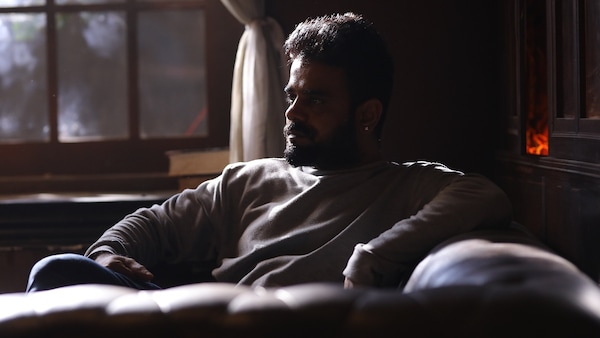
Last Updated: 01.11 PM, Apr 11, 2022
He’s Bhu to several people in the Kannada film industry, having served as photographer on portfolio shoots for them. But today, to the world, he is Bhuvan Gowda, the man who captured director Prashant Neel’s vision of KGF on camera. An accidental photographer, Bhuvan’s transition to cinematography was also completely by chance, but it has changed his life around and how.
From odd job man to photographer in Bengaluru
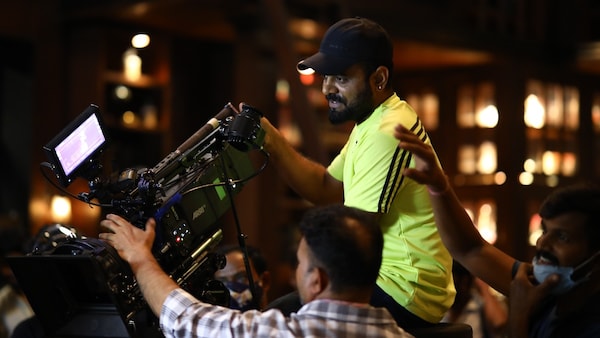
When I first came to Bengaluru, I started out in a watch repair store; then went on to work at the billing counter of a supermarket and so on and so forth. Along the way, friends said that I should try my hand at films as an actor and got a portfolio shoot done. Armed with these images, I went around asking for a chance, but had no luck. However, one of my friends asked me about the pictures and wanted to get a portfolio done for himself. I took him to the photographer and watched the entire shoot keenly, which is when it struck me that I could learn photography. I took a Rs 35,000 loan from my grandmother to buy a camera and then taught myself the basics of photography with the help of videos on the internet and a lot of trial and error. By chance, I got the opportunity to take still photographs for films, which was not the most lucrative, because some would pay and some would not. In fact, I was contemplating leaving photography behind when I got to work on a film with Sriimurali. He quite liked my clicks and referred me for Ugramm, which was directed and produced by Prashant Neel.I was floored by Prashant’s passion towards filmmaking in our first conversation and joined him as still photographer on the film.
Prashant, my guru
I began my filmi journey as a still photographer on Prashant’s Ugramm. The film was delayed during the making, owing to which the cinematographer had to be changed a couple of times. No cinematographer will dedicate 3-4 years to just one film. When Prashant was finally set to complete the film, he asked me to fill in as cinematographer, as he liked my work as a photographer. I was not sure at first, but decided to give it a try anyway. I had a 5D camera back then, on which I could shoot videos also, which we did for a few days, and Prashant was extremely happy with the output. Of course, there was a lot of input from him too on the lighting and framing of scenes, how to bring in contrasts, etc. Truth be told, my guru in cinematography is Prashant. He then rented out a better camera and decided to give me more footage to shoot. The climax was initially meant to be a 5-minute sequence only, but Prashant made changes to the narrative and extended it by 35 minutes, all of which I shot at breakneck speed. And that is how our journey began. If Prashant had not recognized the talent in me and given me that opportunity, I would have never become a cinematographer. I may not have even remained as a photographer. My life has changed and how, and it is all because of Prashant.
After Ugramm, I did a couple of other films, but when I returned to work on KGF: Chapter 1, after every shot, I would ask Prashant, if I got it right. In fact, a couple of times when I discussed the cinematography of some other films with him and how well it was done, he asked me not to dwell over it too much. ‘Whatever you are doing now is perfect, be it the lighting or framing, do not get influenced by anything else. Keep doing what you are doing now’, is what he told me. This was a confidence boost for me. Over time, I understood his vision better and today he just has to tell me what he has on mind and I execute it. We are currently working together on Salaar, with Prabhas.
From KGF: Chapter 1 to 2
When we set out to make KGF, it was only meant to be a film for Kannada audiences, which we wanted to present to the best of our capabilities, within the limitations we had. At that point, we had no idea of the reach the film would have eventually. When it was eventually split into two films and the first went on to create box-office records and receive so much appreciation, it did put us under some pressure.
KGF: Chapter 1 was the result of a lot of hard work, but the atmosphere on the set was a more playful because we had no targets to meet. We were just trying to make a good film for Kannada audience. That was not the case with Chapter 2; now we knew that the whole world is going to see our film and that a lot more people are going to minutely dissect and analyse what we present to them. So, it became a lot more challenging to work on it.
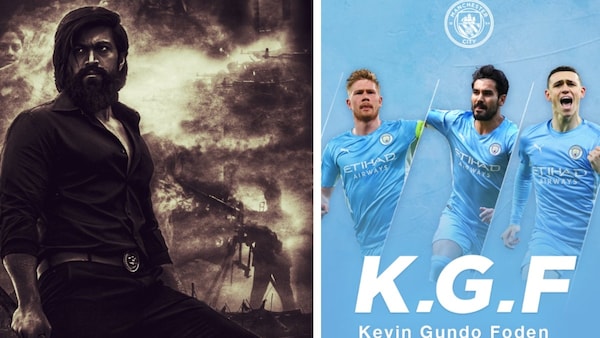
The advantage for the team, though, is that Prashant is a man with immense clarity. For every scene, he knows exactly what he wants from each shot. He explains each shot in minute detail; he is a master narrator in that sense and will give you an idea of the scale, geography and pretty much everything you need to know so that he can get the best work out of you.
Having worked with Prashant since Ugramm, we have a certain understanding of each other. Today, he will just tell me a scene and then waits to see how I have grasped it and what I would do to present it. That’s how well we gel.
When we were making the first film, there were murmurs in the industry about why I was being given the responsibility of such a big project. Even though I had done a couple more films after Ugramm, I was most remembered for this film with Prashant. After KGF Chapter 1, things turned around for me. There was immense trust put on me because I proved that whatever I do, it would be done well. This, in turn, gave me a lot more freedom to experiment on KGF: Chapter 2. The success of Chapter 1 also meant that we now had a bigger budget to work on for Chapter 2.
As Prashant has mentioned multiple times already, the story of KGF: Chapter 1 and 2 has not changed from the day we started out to make one film called KGF. The change is only in the scale of presentation. The difference with the second film is that if we had a plan for a sequence, we would then devise ways to see how it could be done even better and bigger.
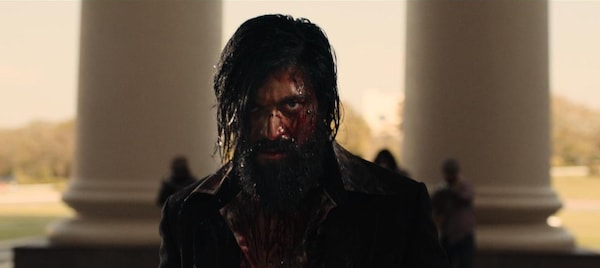
For a cinematographer’s work to really stand out, the location you shoot at, and the background, either natural structures or sets that are specifically created for the purpose, matter a lot. So, when I say we scaled up production, it mainly had to do with the locations we shot at. I, in fact, used the same equipment for both films, because we also needed to ensure that KGF: Chapter 1 and 2 do not look too different. They are, after all, two parts of one story.
The world of KGF on Bhuvan’s lens
One of the elements we experimented with in KGF: Chapter 1 was in shooting with natural light. While it worked brilliantly in a lot of sequences, there were complaints that the scenes in the tunnels could have benefitted from some artificial light, which I couldn’t. I took it up as a challenge to shoot those scenes in natural light, which got mixed response – some absolutely loved it, while others said they couldn’t see anything clearly. This time around that problem does not arise because we do not have too many scenes in tunnels. Major portions of KGF: Chapter 2 were shot in outdoor locations, so, the film may not feel as ‘dark’ as Chapter 1. Considering that massive and grand sets were put up for the film, audiences will be able to enjoy that grandeur onscreen.
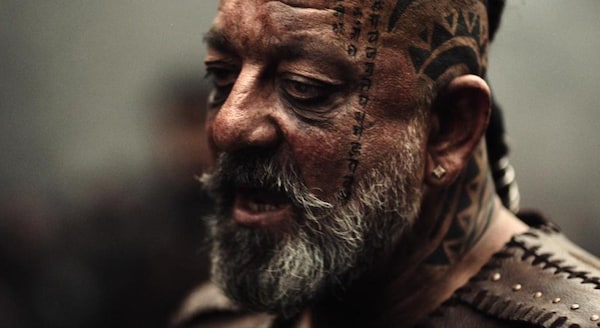
The climax of KGF: Chapter 2 has, yet again, been shot in natural light, for which we experimented a lot amid all the dust and smoke. Both Yash and Sanjay Dutt sir were immensely supportive and shot without complaints in those conditions. I believe that this sequence will be a visual treat for audiences.
Given the conditions we were shooting in, I knew that I had to avoid too many retakes. If I rely on a jimmy jib for the shots, it will require multiple takes. Instead, what I did was to capture most of the sequences with the camera on my shoulder. The more handheld shots you have, the less the requirement of extra shots. Almost 60% of KGF: Chapter 1 has been shot like this, so I am quite the expert at it. I shot all the difficult scenes, like action sequences and the climax, in particular, with the camera on my shoulder. I hope that audiences appreciate the hard work that has gone into this film.

 Premium
Premium